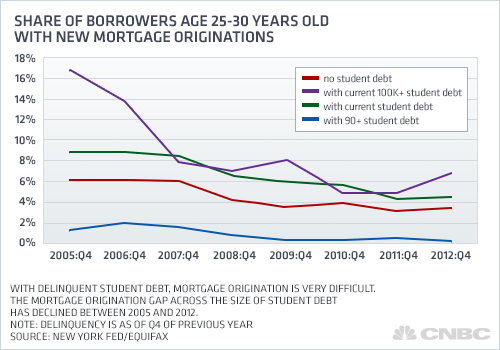By Jane K Dove on March 28, 2013
Some green shoots appear to be pushing up to bring the first hints of new life to Lewisboro’s real estate market.
Sales for 2012 and the first quarter of 2013 are up and the median home price has stabilized instead of declining.The Ledger sat down last week with Houlihan Lawrence Associate Broker Mary Anne Condon, a longtime expert on our town, to review the numbers and discuss what they mean.
2012 recap and comparisons
“For all of 2012, we had 116 sales, compared to 97 in 2011,” she said. “This represents the highest level since the economic downturn began. One hundred-sixteen are the most homes sold since 2007, when 131 changed hands. However, the 116 sold in 2012 is well below the 2004 peak, when 189 homes were sold at the height of the real estate boom.”
Ms. Condon said the still modest though improving sales are a reflection of several factors, including tough mortgage approval standards, requirements for significant down payments, and the need for impeccable credit.
“Fortunately, today’s buyers are typically well-qualified and have the 20% down payment that is now typically required,” Ms. Condon said.
 A “for sale” sign adorns the front yard of a home on Church Tavern Road in South Salem. Home sales in Lewisboro are up for 2012 and the first quarter of 2013, and the median home price has stabilized. (Photo Matt Spillane)
A “for sale” sign adorns the front yard of a home on Church Tavern Road in South Salem. Home sales in Lewisboro are up for 2012 and the first quarter of 2013, and the median home price has stabilized. (Photo Matt Spillane)On the price side, 2011 saw the lowest median house price in 10 years — $560,000. “But 2012 saw an uptick to $610,000,” Ms. Condon said. “This is a positive sign, but still well below our 2007 all-time high median price of $825,000.”
“The 2012 median was impacted by the fact that a number of more expensive properties were sold in 2012. So everyone’s home price did not go up an automatic 8.9% in 2012. The typical house price is still close to flat year-to-year.”
Comparing median prices in adjacent towns, Bedford had a 2012 median price of $745,000 and Pound Ridge came in at $777,500.
“Again, these prices are still way below the peak of the local market in 2007,” Ms. Condon said.
Prices ranged widely in 2011, from a low of $185,000 for a short sale in South Salem to a high of $2.3 million for a 10-acre estate with pool and tennis court in Waccabuc. A waterfront home on Lake Truesdale commanded a sale price of $1,551,000.
“A significant amount of sales activity in 2012 was at the lower end,” Ms. Condon said.
She cited numbers that showed 40 of the 116 houses sold in 2012 coming in at under $500,000. By comparison, the “boom year” of 2007 had only 15 homes sold at under $500,000. “As prices go upward, sales drop off,” she said.
Property tax impact
When asked by The Ledger what impact Lewisboro’s high property taxes had on the marketability of its homes, Ms. Condon said taxes are always a factor in the purchase of a home.
“When a buyer is looking at a home, they consider the entire monthly cost, which includes both their mortgage and their property taxes,” she said. “Most homeowners write out a single check to their bank each month and look at the two numbers added together to determine how much they can afford to spend. Taxes do matter. Currently Lewisboro’s are higher than those on properties in adjacent school districts.”
Ms. Condon said many buyers still seek out homes in the Katonah-Lewisboro school district because of its good reputation.
“But if the taxes are too high, they may find the house they want is simply out of reach,” she said.
Lewisboro tax assessor Lise Robertson told The Ledger that current taxes on a $500,000 Lewisboro home average $14,000. On an $850,000 home they come in at $23,800.
Current quarter
Ms. Condon said she believed 2013 would prove to be a stronger real estate year than 2012 if new numbers hold up.
“For the first quarter of 2013, we have had 19 sales and another 22 are in contract, with a median list price of $511,000,” she said. “The first-quarter median sale price so far is $620,000, an insignificant change from 2012’s figure of $610,000.”
“As an optimist, I believe the rest of the year will continue to show improvement. The stock market is dong very well and jobs reports are better. Overall, people just seem to be feeling better about the economy, and on a national basis, house prices are going up and builders are getting back to building.”
Ms. Condon said she expected interest rates to remain at historically low levels, another boon to the market.
“But I would advise my sellers not to expect a quick rebound to the good old days,” she said. “Buyers are still very cautious and want a deal. They come into our office armed with information about the complete financial histories of the homes they want to see and are ready to drive a hard bargain.”
Ms. Condon said it could be a long time, if ever, for Lewisboro to see prices like those in the frenzied years of the real estate boom.
“That might be an anomaly we never see again, but I can say for sure that right now, things are definitely looking better and the market is slowly coming back to life.”
All figures used here are from the Westchester-Putnam Multiple Listing Service.




© 2013 The Peral Group